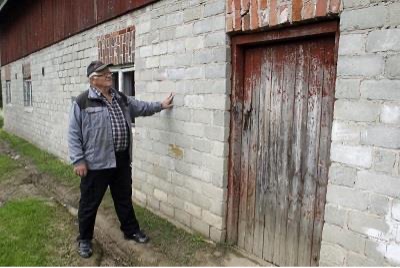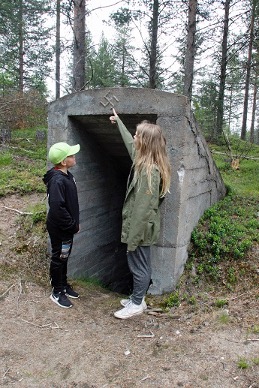Ketola
A village full of history
In the village of Ketola there is a small airfield still in use, built in 1941 during the war. For the history buff, the village of Ketola also has other things to see, such as the German military constructions.
There are war memories in Ketola
The traces of the last wars are still visible in Ketola, especially around Hanhikoski airport. When the Germans left, they burned and blew up the buildings and structures of their airbase. There is a lot of war debris and the remains of concrete bunkers around the airport.
The foundations and bricks of many of the houses in Ketola are inherited from buildings destroyed during the war. Cement was also obtained from destroyed German warehouses, as was the lime mortar used for masonry.
Juhani Rytilahti said there was even a German cinema next to the airport, where children watched propaganda films and movie dramas.
“The bricks and masonry in our barn come from Hitler’s warehouses and destroyed buildings. When we came back from the evacuation, we saw the destroyed bunkers and burnt buildings. There was also quite a mine risk, as the Germans were sowing a lot of deadly explosives in the area. Our children’s parents warned us of the dangers,” says Rytilahti.
The Rytilahti barn also houses the mobile stairs used by German aircraft for maintenance. Only the wooden wheels have been replaced by iron wheels. There are still piles of chimneys, smoke pipes, petrified cement and other debris inside the fence of the Hanhikoski airport.
On the border of the Sarrio firing range in Ketola, a German masonry cellar has been preserved almost in its former state. Above the door, a swastika patterned in cement moulding is still very clearly visible. Only the door is missing.
Next to the cellar, the foundations of some kind of heated warehouse are still visible.
NIcknamed “Jänkäjääkärit” went to war from Hanhikoski
During the Continuation War (jatkosota 1941-1944) , the Hanhikoski area of Ketola was a centre of intense activity: on 11 June 1941, Infantry Regiment 12, or the Jänkäjääkärien Regiment, was formed in the area from fresh conscripts and Lapland men. General mobilisation in Finland was declared on 17 June 1941.
The war record of the Rabbit Hunters began with a long march to Salla’s Hautajärvi. JR 12’s I and III battalions marched through Kemijärvi and a couple of weeks later were in a holding position at Hautajärvi, a few kilometres from the eastern border. The second battalion was subdued by the Germans in the direction of Kiesting.
The legendary commander of the Jänkäjääkärit was Colonel Albert “Reikärauta” Puroma 11.6.1941- 29.1.1944. In the Talin-Ihantala decisive battles the Jänkäjääkärit were led by Colonel Yrjö Hanste.
A German air wing in Hanhikoski
The German airborne division participated in supporting the attack in the direction of Salla and Kiesting with I. Squadron Ground Combat Regiment 5 (I/SG5) with Junkkers JU 87 dive bombers, Stuk with Fighter Regiment 5 Focke Wulf 190 and Messerschmitt bf 109 fighters.
In February 1944 there were 42 planes in Kemijärvi.



